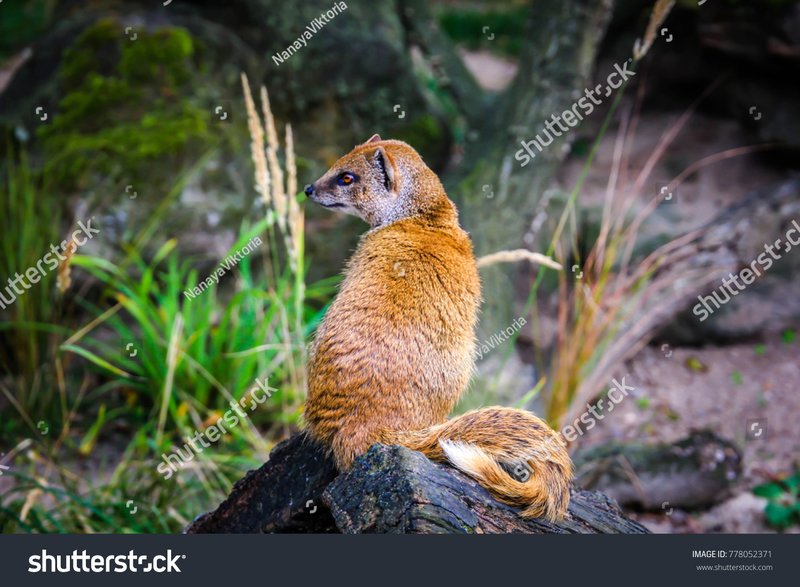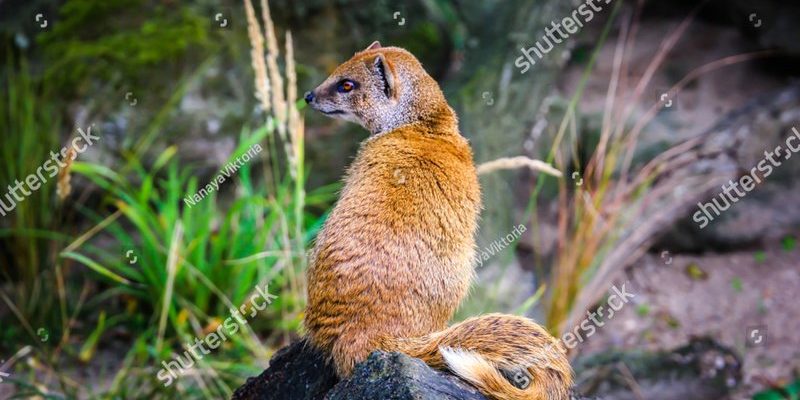
Yellow mongooses are social animals known for their playful behavior and interesting survival tactics. They don’t just survive; they adapt in remarkable ways, which makes them a fascinating case study for anyone interested in wildlife and nature. So, grab a cup of coffee, and let’s dive into the world of yellow mongooses and discover how they navigate their harsh habitats.
Understanding Yellow Mongooses
Yellow mongooses, or *Cynictis penicillata*, are small members of the mongoose family that inhabit the dry savannas and woodlands of southern Africa. They weigh about 2 to 3 pounds and measure around 12 to 16 inches in length, including their tail which is almost as long as their body. Their sandy yellow fur helps them blend seamlessly into their sun-baked surroundings, making it easier to avoid predators.
These adorable little creatures are highly social and often found in groups called “mobs.” Mobs can consist of up to 30 individuals, working together to raise young, find food, and keep watch for danger. Just picture a group of friends looking out for each other while partaking in some playful antics—it’s pretty heartwarming!
Adaptations to Extreme Weather
Living in harsh environments means that yellow mongooses need to be tough. They’ve developed several **adaptations** to manage extreme heat during the day and chilly temperatures at night.
**Fur and Body Temperature Regulation**: Their light fur not only provides camouflage but also helps reflect the sun’s rays. On particularly hot days, mongooses will dig shallow burrows to escape the heat. This behavior is crucial because it allows them to stay cool while avoiding dehydration.
**Activity Patterns**: Yellow mongooses are primarily diurnal, meaning they are active during the day. However, during the peak heat hours, they often retreat to the shade or stay in their burrows. This behavioral shift is a smart way to conserve energy and maintain hydration.
Diet and Foraging Techniques
The diet of yellow mongooses is as varied as their habitat. They are opportunistic feeders, meaning they grab whatever’s available. Their typical menu includes:
- Insects
- Small mammals
- Frogs
- Fruits and vegetables
Here’s the thing: their strong sense of smell helps them locate food even under the harshest conditions. When foraging, they employ a technique called “sniff and dig,” allowing them to find tasty morsels hidden beneath the surface. This clever strategy not only fills their bellies but also makes them less reliant on a single food source, which is essential in an unpredictable environment.
Social Behavior and Cooperation
While yellow mongooses are known for their individual skills, their **social behavior** truly sets them apart. Living in groups means they can cooperate when it comes to finding food and protecting each other from threats.
**Sentinel Behavior**: When foraging, one mongoose will take on the role of a lookout, keeping an eye out for predators like eagles or snakes. This sentinel will make warning calls to alert the group, ensuring safety while they have their meals. It’s a great example of teamwork in action, showing how working together can lead to greater success.
**Raising Young**: Another beautiful aspect of their social structure is the communal effort in rearing young. Multiple females in a mob will nurse and take care of the offspring. This not only allows the mothers to share the load but also creates a strong support network for the developing mongooses. You can almost picture a cozy family gathering, where everyone pitches in to help.
Dealing With Predators
Like many animals, yellow mongooses face their share of threats. Their survival tactics against predators are quite impressive.
**Vigilance and Camouflage**: As we mentioned, their color provides excellent camouflage, helping them blend into their surroundings. When they sense danger, they freeze or stay low to the ground, hoping to go unnoticed.
**Agility and Speed**: Should they be spotted, yellow mongooses are quick on their feet. They can dash away at impressive speeds, often zigzagging to confuse potential attackers. It’s a bit like those classic chase scenes in movies, where the hero finds a clever way to escape danger.
**Alarm Calls**: Besides using body language, their vocalizations play a key role in survival. Communicating through different alarm calls, they alert each other about the presence of a threat. This level of awareness helps ensure that their community remains safe.
Water Conservation Strategies
In a dry environment, finding water isn’t always easy for yellow mongooses. Here’s where their survival skills really shine.
**Dietary Water Consumption**: One way they manage hydration is through their diet. Many insects and small animals contain some water, which helps keep them hydrated.
**Efficient Kidneys**: Their bodies are also adapted to conserve water. Yellow mongooses have specialized kidneys that help reduce water loss. This means they can go longer without drinking, allowing them to survive in arid conditions.
**Burrowing**: Lastly, their ability to dig burrows provides a cool, moist environment that can help reduce water loss from their bodies. Staying underground during the hottest part of the day helps them remain cool while minimizing the need for water.
The Importance of Adaptation
Yellow mongooses exemplify the importance of adaptation in nature. Their ability to thrive in harsh environments highlights how life can find a way, no matter how challenging the circumstances. Consider them nature’s little survivors, using teamwork and clever strategies to overcome obstacles.
You might be wondering why this matters to us. Understanding these adaptations not only fascinates wildlife enthusiasts but also sheds light on broader ecological principles. We can learn how other species might face climate change and habitat loss, which is crucial for conservation efforts.
In the grand tapestry of nature, yellow mongooses play a unique role, showcasing resilience and adaptability. Their social structures, clever survival techniques, and ability to cope with harsh environments make them a compelling subject for study and admiration.
Next time you think about survival in the wild, remember the yellow mongoose—those little creatures remind us that even in the toughest of situations, there’s always a clever way to persevere. Whether it’s through teamwork, smart eating habits, or quick escapes, they’re a testament to the power of adaptation. So, keep your eyes peeled for these delightful critters; they’re more than just cute faces—they’re champions of survival!

